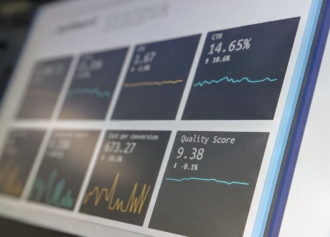Tips to improve workplace productivity
- Automate internal and external workflows
- Eliminate unnecessary meetings and tasks
- Create blocks of focus time
- Identify the tools your employees need
- Develop generous time-off packages
Businesses are constantly challenged to do more with less. How can you beat last quarter’s sales numbers with the same budget? How can you complete more client work without adding internal resources?
If these questions sound familiar, then one of your main concerns is likely workplace productivity. If employees can find new ways to be productive, then they can get more done with the same time and budget they currently have.
However, productivity often becomes a buzzword rather than an actionable goal. Is your team really more productive if they spend an hour each day attending productivity meetings or reporting to management on how productive they are?
It’s time to dig deeper into workplace productivity. Here are five tangible ways to improve your workflows so your employees can get more done.
1. Automate internal and external workflows
One of the best ways to increase productivity within your organization is to automate repetitive tasks. These are tasks that don’t require actual brainpower but still take up a significant amount of time.
One example is the development of daily reports. Let’s say an employee spends one hour each day compiling reports that management and the rest of the team then review.
While the analysis of these reports is valuable, that hour spent manually compiling information can be a waste of time when there’s an easier way to accomplish this task. This is why many software tools today provide automatic reporting functionality.
Challenge your employees to identify repetitive and time-consuming tasks that can be automated. Tools like Jotform can help you automate tasks like approval processes, data-collection, and report building, reducing the amount of busywork employees have and freeing up their time for more meaningful work.
2. Eliminate unnecessary meetings and tasks
Along with automation, you can also improve workplace productivity by removing unnecessary tasks entirely. These are tasks that don’t contribute to the company’s goals in a meaningful way or that the team doesn’t complete effectively. Meetings too can be eliminated.
Research by workforce management solution Deputy finds that the average worker spends 4.48 hours in meetings per week, and close to half of the people surveyed said the average meeting lasts between 30 minutes to an hour, writes Deputy’s Katie Sawyer. This figure varies significantly by industry.
If your company can reduce the number of meetings employees attend each week — or the amount of time they spend in them — you could give that time (potentially hundreds of hours) back to your team for them to use more productively.
3. Create blocks of focus time
Interruptions are one of the biggest enemies of productivity. If you have a significant project to complete on a tight deadline, you don’t want to be interrupted by coworker phone calls, emails, or desk visits. You can easily lose large chunks of your day if you allow these interruptions to distract you.
The team at time-blocking app Reclaim.ai encourages people to create focus periods where they shut off interruptions to get meaningful work done. When you start your focus time, you don’t answer your phone or respond to emails. You don’t attend meetings or allow visits to your desk.
As a manager, it’s your job to encourage employees to embrace focus time — and to respect that time yourself. It’s common for leadership to expect others to respect their focus time, only to be frustrated when an employee takes more than five minutes to respond to an email.
4. Identify the tools your employees need
Work with your team members to make sure they have the right tools and technology to be effective. This could mean updating an old software that has been part of the company’s processes since 1995 or approving the use of new apps that target sore points in workplace productivity.
Your employees will tell you what tools they want, but you need to decide what they need. Consider the price of various tools and what they claim to accomplish. This exercise will help you make wise technology investments.
5. Develop generous time-off packages
The amount of time your employees spend in the office isn’t as important as the quality of work they do. When your team members are exhausted, disengaged, and stressed, the quality of their work suffers.
Stress can also lead to higher turnover rates, increasing your costs and further damaging productivity. So make sure you give your team members time to rest and recover.
“With stressors removed, the body has a chance to recover from the toll chronic stress takes on the immune system, even helping us recover from the last stage of the stress process, burnout,” says productivity trainer Joe Robinson at Optimal Performance Strategies.
Along with offering a generous amount of vacation time, emphasize the importance of a work-life balance. Limit how many hours employees should work and encourage team members to take their full lunch breaks.
Improving workplace productivity is a multi-step process. Everyone, from the newest interns to the C-suite, needs to have the same goals to eliminate unnecessary meetings and respect focus time. When the entire company follows these steps, you can increase your productivity in a meaningful way.
Photo by ThisisEngineering RAEng on Unsplash














































































































Send Comment: